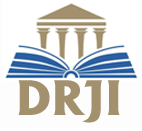Author Guidelines
- Papers should discuss the themes of Islamic Education Management or Leadership, Pesantren, Madrasa, or Islamic School Management, written either in Indonesian, English or Arabic;
- Papers must be typed in one-half spaced on A4-paper size;
- Papers’ length is about 6,000-10,000 words;
- All submission must include a 150-200 word abstract;
- Full name(s) of the author(s) must be stated, along with his/her/their institution
- All submission should be in Open Office, Microsoft Word, RTF, or Word Perfect document file format;
- Arabic words should be transliterated according to the style of Mc Gill University;
- Bibliographical reference must be noted in footnote and bibliography according to Chichago Manual style.
- When a source is cited for the first time, full information is provided: full name(s) of author(s), title of the source in italic, place of publication, publishing company, date of publication, and the precise page that is cited. For the following citations of the same source, list the author’s last name, two or three words of the title, and the specific page number(s). The word ibid. may be used, but op.cit., and loc.cit. are not.
Example of Bibliography:
Fogg, Kevin William, “The Fate of Muslim Nationalism in Independent Indonesia”, PhD. Dissertation, Yale University, 2012, http://gradworks.umi.com/35/35/ 3535314.html, accessed 16 Feb 2016.
Hosen, Nadirsyah, “Shari’a & Constitutional Reform in Indonesia”, Master Thesis, Singapore: National University of Singapore, 2005.
Nur Ichwan, Moch, “Differing Responses to an Ahmadi Translation and Exegesis: The Holy Qur’ân in Egypt and Indonesia”, Archipel, Vol. 62, no. 1, 2001. [http://dx.doi.org/10.3406/arch.2001.3668].
‘Aziz, Hafidh, Guru Sebagai Role Model Pendidikan Karakter Anak Usia Dini Perspektif Pendidikan Islam dan Ki Hajar Dewantara” An-Nur: Jurnal Studi Islam, Vol. 7, no. 1, (2015)
Az-Zuhaili, Wahbah, al-Fiqh al-Islāmī wa Adillatuhu, vol. II, 2nd edition, Beirut: Dār al-Fikr, 1985.
Lewin, K. Group Decision and Social Change. Readings in Social Psychology, London: Methuen and Co LTD, 1951.
Ludjito, Ahmad, Pendidikan Agama Sebagai Subsistem dan Implementasinya dalam Pendidikan Nasional, dalam Chabib Thoha dan Abdul Mu’ti, PBM PAI di Sekolah: Eksistensi dan Proses Belajar Mengajar Pendidikan Agama Islam, Yogyakarta: Pustaka Pelajar, 1998.
Muhyadi, Manajemen Perubahan, Makalah disampaikan dalam ’Workshop Strategi Pengembangan Mutu Sekolah’ tanggal 7 Agustus 2010, di Program Pascasarjana, UNY.
Madjid, Nurcholish, Bilik-bilik Pesantren: Sebuah Potret Perjalana, Jakarta: Paramadina 1997.
Please consider the following creteria:
- The title of the article submitted to Manageria: Jurnal Manajemen Pendidikan Islam should reflect a specific focus of study, based on researches--be they library or fieldwork researches--and thus the author can have a general statement and sub-title specifically confining the scope of study
- The article submitted should be based on research--be it library or fieldwork or other kinds of researches
- The article should present bibliography which entails primary sources--books, manuscripts, interviews, or observation--and updated secondary sources from books or peer reviewed journals
- The article should contain an argument/thesis/finding which contribute to scholarly discussion in a field of study which should clearly be mentioned and systematically presented in abstract, content, and conclusion
- The article should use good Indonesia/English/Arabic, or at least can be understood; the author is fully responsible in fixing and editing language; the copy editor of Manageria: Jurnal Manajemen Pendidikan Islam is responsible only for minor typos and understandable grammatical errors.
- The style and format, including the structure of article, footnotes, bibliography, should follow those of Manageria
- The template of Hijri article in word document format is available for download here.
NOTE: It is suggested the use of a reference manager at styling the footnote and the bibliography, such as Zotero, Mendeley, et cetera.
The PDF version of this guideline and the Arabic transliteration guideline is available for download here










2.png)


